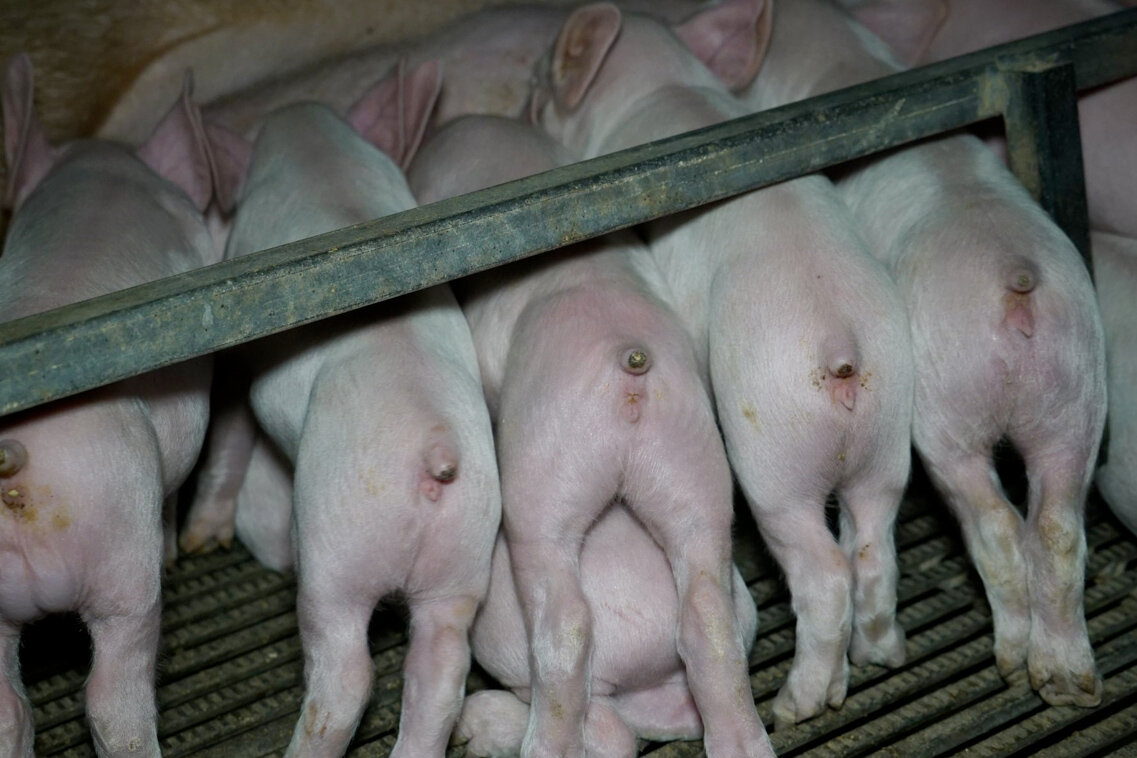
Docking a Piglet’s Tail
Just like dogs, pigs use their tails to express their emotions, wagging them when happy and hiding them between their legs when they are stressed or scared.
In 2004, it became illegal to dock a puppy’s tail under the Prevention of Cruelty to Animals Act 1979 (POCTA), unless it was medically necessary. The maximum penalty for docking a puppy’s tail is $5,500 for individuals or six months imprisonment or $27,500 for corporations. [1]
Docking a puppy’s tail involves cutting through muscles, tendons, highly sensitive nerves and severing bone and cartilage connections. [2] A piglets anatomy is similar to a puppy, with the tail containing part of their vertebrae. Dr Pierpaolo Di Giminiani says, “the tail is full of neuro-anatomical structures responsible for the pain response. It is comparable to our human skin.” [3]
Despite being considered cruel to perform on puppies, tail docking is completely legal for pigs and is done without pain relief. The person who cuts their tails off does not even need to be a registered veterinarian.
The anatomy of a dog.
Why do they dock their tails?
Pigs are highly intelligent creatures, who would naturally spend their days exploring and foraging. They also prefer to live in small groups. [4] The cramped and barren sheds deny them their natural behaviours, causing them to become incredibly frustrated, stressed, and bored. The confinement and lack of stimulation, combined with the stress from living in their own waste, can cause the pigs to start tail biting. [5]
In an attempt to reduce tail biting and infections, farmers cut the piglets’ tails off. This may stop the tail biting, however, it completely ignores the cause of their frustrations and the fact that the pigs are suffering mentally.
Is it painful?
Yes. Docking a piglet’s tail was found to cause acute trauma and stress. Studies showed that piglets cortisol concentrations increase (a common response to pain), and their behaviour changed. This included their eating habits, increased restlessness, foot-stamping, head-turning, time spent in abnormal postures, vocalisation, tail wagging, increased scooting (a completely abnormal behaviour), and tail-jamming. [6]
Dr Pierpaolo Di Giminiani and his collaborators studied pigs for up to 16 weeks after they had their tails docked. They found that “traumatic neuroma and neuromatous tissue development was evident one month after tail docking.” [3]
Piglets with docked tails.
Source: Aussie Farms
What is the solution?
Consider takings pigs off of your plate! Tail docking is just one aspect of the cruelty pigs face on farms. By ending the demand, we can stop their suffering and slaughter.
Join the fight for better laws for animals by demanding an Independent Office of Animal Welfare.
Click here to learn more about the life of a pig on Australian farms.
A rescue piglet and puppy.




